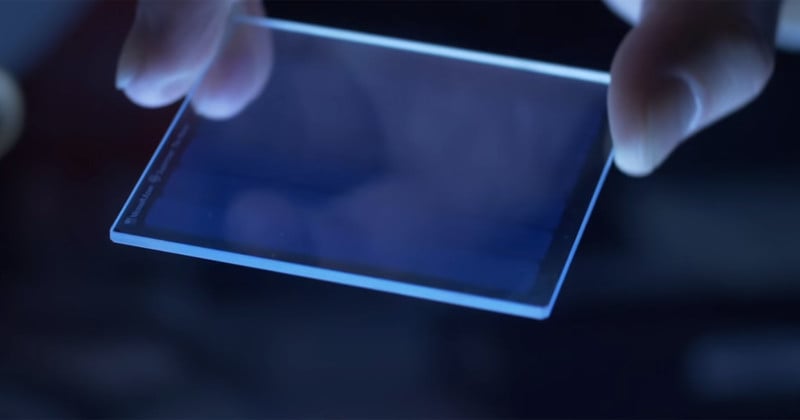All digital data storage decays in one way or another. Depending on if your storage media, your digital photos may last just years or decades before “bit rot” destroys it. But Microsoft is working on something called Project Silica that could one day allow you to store your precious memories safely for 10,000 years by etching the data into glass.
In the 5-minute video above, CNET takes a look at this new technology that could revolutionize digital data storage.
“Data that needs to be stored long-term is growing exponentially,” Microsoft states. “Existing storage technologies have a limited lifetime, and regular data migration is needed, resulting in high cost. Project Silica designs a long-term storage system specifically for the cloud, using quartz glass.”
Microsoft’s idea is to write data into a piece of glass using a laser that has pulses as brief as 1/10,000,000,000,000 of a second. The laser etches ultra-small “voxels” into the glass, and the laser’s strength and polarization result in voxels of different sizes and orientations. Many layers of voxels can be written into a piece of glass, allowing for a large amount of data to be stored.
To show off what the technology can do, Microsoft partnered with Warner Bros. in 2019 and stored the iconic 1978 “Superman” movie on a piece of glass roughly the size of a drink coaster, 2x75x75mm in size. The tiny sheet contains over 75.6GB of data.

“The hard silica glass can withstand being boiled in hot water, baked in an oven, microwaved, flooded, scoured, demagnetized and other environmental threats that can destroy priceless historic archives or cultural treasures if things go wrong,” Microsoft says. As long as it’s handled properly (e.g. not dropped and shattered), the glass and data within should remain unchanged for thousands of years.
Internet pioneer Vint Cerf warned in 2015 that unless solutions are found, the 21st century will one day be looked back on as an “information black hole.”
“We think about digitizing things because we think we will preserve them, but what we don’t understand is that unless we take other steps, those digital versions may not be any better, and may even be worse, than the artifacts that we digitized,” Cerf said. “[…] If there are pictures that you really really care about then creating a physical instance is probably a good idea. Print them out, literally.”
Microsoft’s Project Silica seems to be one solution to allow information of our age to endure for generations. But until it (or some other technology) is widely available, make sure you print your most precious photos.